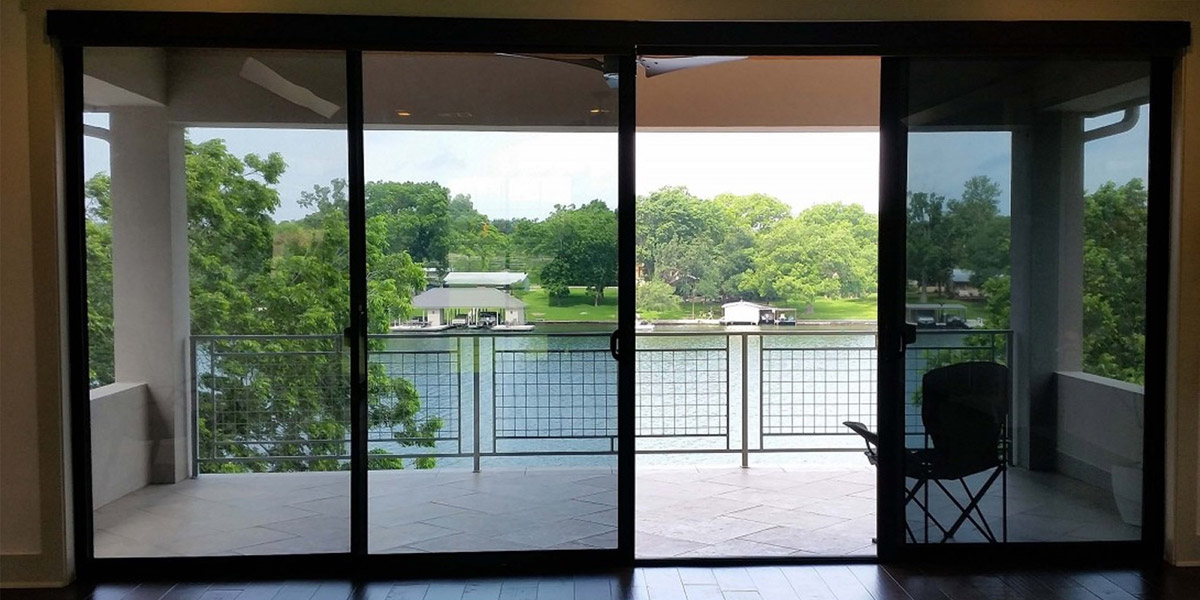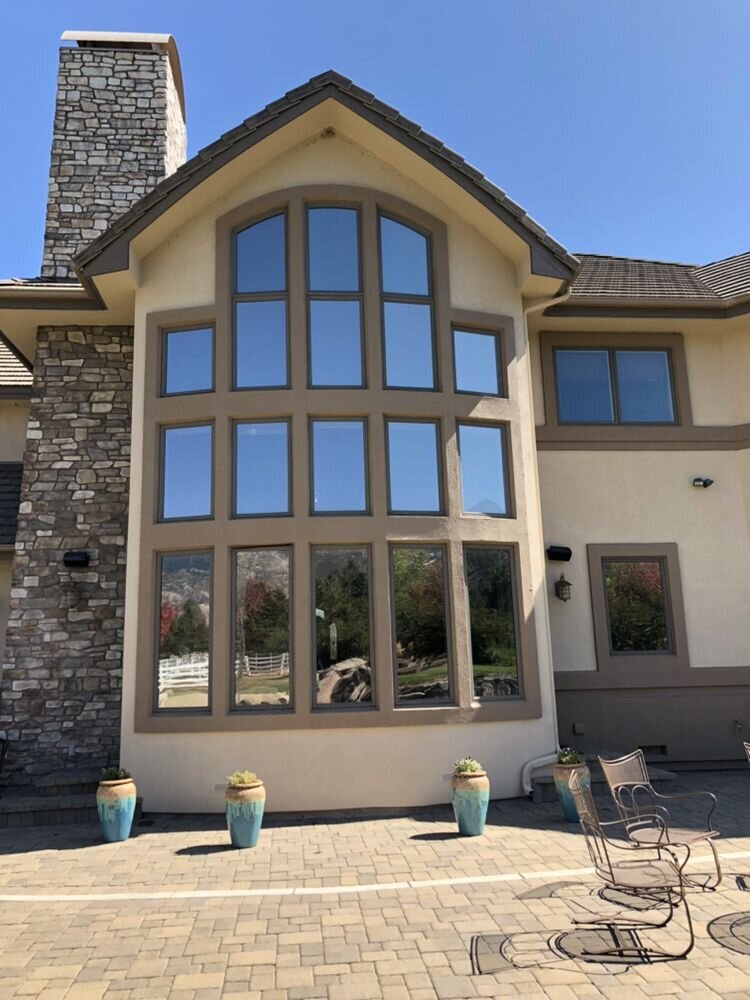Residential Window Tint: Maintain Your Home Cool in the Summertime Heat
Residential Window Tint: Maintain Your Home Cool in the Summertime Heat
Blog Article
Exactly How Residential Home Window Tinting Boosts Your Home's Power Performance
Residential home window tinting offers a compelling option for homeowners seeking to improve energy performance within their home. By applying specialized movies to windows, it successfully reduces heat transfer, therefore maintaining interior temperature levels and decreasing the requirement for extreme heating or air conditioning. This not just cuts energy consumption however likewise provides an extra comfy environment by reducing glow. Nonetheless, understanding the subtleties of exactly how tinting works and picking the appropriate type for your home can be pivotal. Oddly, what aspects should one consider prior to making this investment?
Recognizing Home Window Tinting
Recognizing home window tinting is crucial for home owners seeking to improve both comfort and energy effectiveness in their living spaces. Residential Window Tint. Window tinting includes the application of a slim film to the interior or outside surface of glass home windows. This film can considerably regulate the quantity of sunshine and warmth that enters a home, hence influencing indoor climate conditions
There are various sorts of window tinting films offered, each with unique buildings. Dyed movies take in solar energy, while reflective movies deflect it away from the glass surface. Ceramic movies use an equilibrium of presence and warmth being rejected, making them a popular selection among homeowners. The effectiveness of home window tinting is commonly measured by its Visible Light Transmission (VLT) percent, which indicates just how much light can travel through the movie.
Benefits of Energy Effectiveness
Window tinting not just boosts aesthetic appeals yet also plays a substantial role in improving energy performance within residential rooms. By decreasing warm transfer via home windows, tinted films produce an extra steady indoor climate, which can bring about substantial decreases in power intake for home heating and air conditioning. This energy efficiency converts into lower energy expenses, giving home owners with significant lasting financial savings.

Additionally, home window tinting improves the convenience of living areas. By reducing glow and blocking hazardous UV rays, colored home windows produce an even more pleasant setting, which can lead to improved wellness for occupants. The protection against UV rays additionally helps maintain furnishings and floor covering from fading, adding to the durability of household items.
Exactly How Tinting Functions
Tinting movies run via a mix of innovative materials and modern technologies made to control the quantity of solar power entering a home. Mostly made up of polyester, these movies frequently include ceramic or metallic bits that soak up and mirror heat. This double capacity enables them to dramatically decrease the penetration of ultraviolet (UV) rays and infrared radiation while allowing noticeable light to go through.
The performance of window tinting is gauged by its solar heat gain coefficient (SHGC), which shows just how much solar energy is sent through the window. Reduced SHGC worths are more effective as they denote higher warm rejection. In addition, window colors can include a range of tones, permitting property owners to tailor their aesthetic choices while improving power performance.
In addition, these films work as a barrier, stopping warmth loss throughout colder months by showing interior heat back right into the living space. This thermal insulation result complements the air conditioning benefits gotten throughout warmer months, adding to a balanced interior environment year-round. By taking care of solar power efficiently, residential window tinting not just improves convenience but also plays an important duty in reducing energy consumption and reducing utility expenses.
Picking the Right Tint

There are numerous sorts of window films available, consisting of dyed, metalized, and ceramic. Dyed movies are cost-effective yet may have limited durability. Metalized movies use far better heat being rejected yet can conflict with electronic signals. Ceramic movies provide superb heat control without jeopardizing presence and are highly durable, making them a prominent choice.
Visible light best site transmission (VLT) is another essential aspect, as it shows the amount of natural light that can travel through the colored glass. House owners need to select a tint with a VLT that enhances their lighting preferences while still giving adequate glare decrease.
Additionally, evaluating the solar warm gain coefficient (SHGC) can aid establish how well a color can block warmth from sunlight. A reduced SHGC suggests much better warm control, ultimately boosting energy performance.
Installment and Maintenance Tips
Correct installation and upkeep are vital components in maximizing the advantages of domestic home window tinting. To attain optimal results, it is recommended to employ a qualified professional for setup. This makes certain that the color is used properly, avoiding air bubbles, wrinkles, or imbalance that could endanger efficiency. Specialists get more also make use of specialized devices and techniques, which can improve the longevity and performance of the color.
Following installment, maintenance is vital to lengthen the life of the home window film. It is suggested to wait at least one month before cleaning the tinted home windows to allow the adhesive to cure totally. When cleansing, utilize a soft towel and a gentle, ammonia-free cleaner to prevent harming the film. Stay clear of rough materials that could scrape the surface area.
Attending to these problems immediately can stop further damage and preserve energy performance. By adhering to these installation and maintenance ideas, house owners can ensure their window tinting continues to supply significant energy savings and comfort for years to come.
Verdict
Finally, residential window tinting acts as a reliable service for enhancing energy efficiency within homes. By reducing warm transfer and blocking damaging UV rays, window films add to decrease energy usage and enhanced indoor comfort. The selection of ideal tinting materials, in addition to proper installation and maintenance, further makes the most of these benefits. Ultimately, home window tinting represents a lasting investment that not just lowers utility costs yet also advertises a comfortable living environment throughout the year.
Window tinting entails the application of a thin movie to the inside or exterior surface area view website of glass windows. By reducing warmth transfer via windows, tinted films develop an extra stable indoor environment, which can lead to substantial decreases in energy intake for heating and cooling.The efficiency of window tinting is determined by its solar heat gain coefficient (SHGC), which indicates how much solar energy is transferred through the window. By handling solar power properly, property home window tinting not just improves convenience but additionally plays an important duty in minimizing energy consumption and reducing utility bills.
By lowering heat transfer and blocking damaging UV rays, window movies contribute to lower energy consumption and enhanced indoor convenience.
Report this page